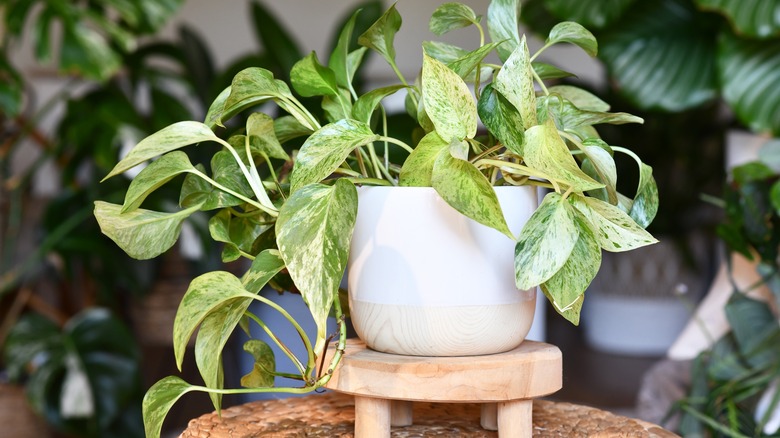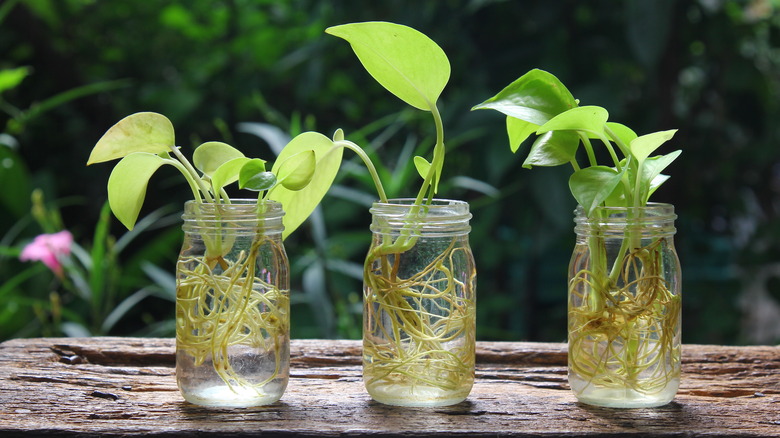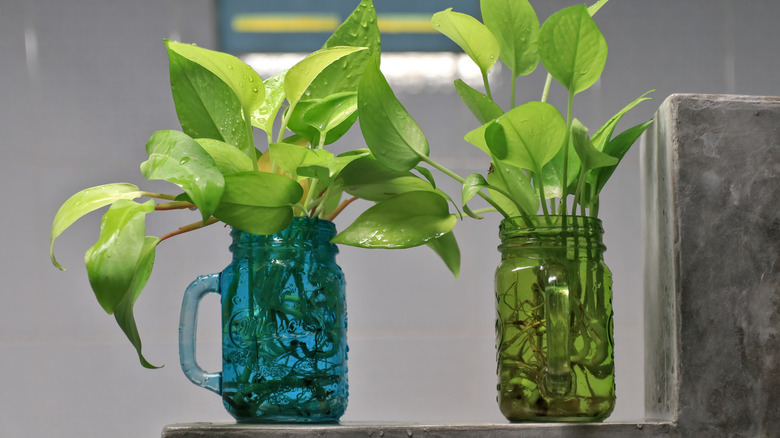Can You Grow A Pothos Plant Without Soil?
A pothos plant is like that easygoing friend who doesn't ask much of you and seems unbothered when you change your plans. All it needs is a bit of water now and then. But if you forget? There are no hard feelings. A little sunlight would be nice, too. But if you've only got fluorescent bulbs? That's ok — it will make do.
This adaptability is what makes golden pothos (Epipremnum aureum) a great plant for beginners and less-attentive plant parents. Native to the Solomon Islands, this tropical plant is often known as devil's ivy because it is so difficult to kill. While it prefers warm, humid environments, it tolerates a wide variety of conditions. It isn't picky about light or soil and recovers quickly from neglect and underwatering. In fact, pothos is so easy to grow that you don't even need soil. It will happily subsist in water alone.
Whether an indoor plant grows well in water depends on the adaptability of its root system. Roots need oxygen to grow and absorb nutrients, and they usually get this oxygen from air trapped in pore spaces within the soil. However, pothos plants have nodes along their stems, which produce adventitious roots that can extract oxygen from water. As a result, pothos can live for years as a hydroponic houseplant so long as you change out the water every few weeks. If you sometimes (or always) forget to water your plants, this may be the solution to your not-so-green thumb.
How to grow pothos plants without soil
The easiest way to grow pothos in water is to start with a cutting, just as you would normally do to propagate your plant. Using clean pruning shears, cut off a length of vine of at least 3 inches. Remove the leaves from the base of the vine and place it in a container of water so that at least two of the nodes (but none of the leaves) are submerged. Just about any container will do, but clear glass works well for watching roots grow. Tap water is usually fine for growing pothos, but let the water sit out for at least 24 hours before adding it to your container. This will allow any excess chlorine to evaporate. Once you've situated your pothos in its new aquatic abode, place it in bright, indirect light. You should notice small white roots appearing within a couple of weeks. Over time, these roots will continue to grow until they fill the entire container.
Since there is a finite supply of oxygen in your container, it's important to replace the water every 2 to 4 weeks or sooner if it starts to look cloudy. You'll also need to provide your pothos with nutrients via a liquid fertilizer. Look for one that is specifically formulated for hydroponics. Usually, a few drops every 4 to 6 weeks is adequate, but you may need to experiment to determine the best dose and timing for your plants.
How to showcase your water-grown pothos plants in your home
You can integrate your water-grown pothos into any room by getting creative with your container choices. Fish bowls, pitchers, beakers, and even old coffee pots make eye-catching hydroponic homes for these plants. You can put pothos in pint glasses to liven up a bar or give your office a vintage vibe by adding pothos-filled apothecary jars. You can even display cuttings in spice jars in your kitchen. Bear in mind, however, that pothos is toxic, so keep these plants away from pets and young children.
The only real downside to keeping pothos in water is controlling algae growth inside the containers, particularly when placed in sunny locations. One way to limit this growth is to keep your pothos in opaque or colored glass containers instead of clear glass. Alternatively, you can move the pothos to a dimmer location to see if that helps. Temporarily wrapping the container with aluminum foil may also help your root sprouts flourish by starving the algae and preventing it from getting sunlight. However, the easiest solution is just to remove your pothos and scrub the container with a brush.
Wherever you choose to place your pothos, be sure to check in with it occasionally. While these friendly plants are far from needy, they appreciate some attention now and then. But if you forget to check in? No worries — they won't hold it against you.


